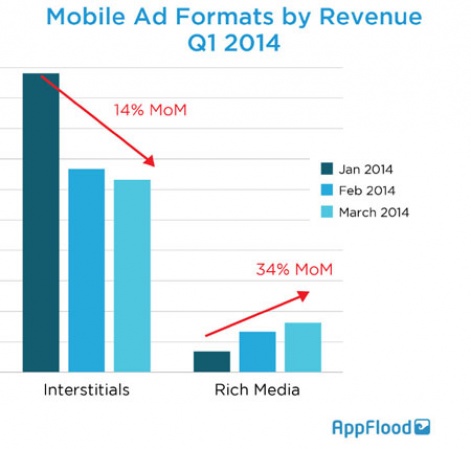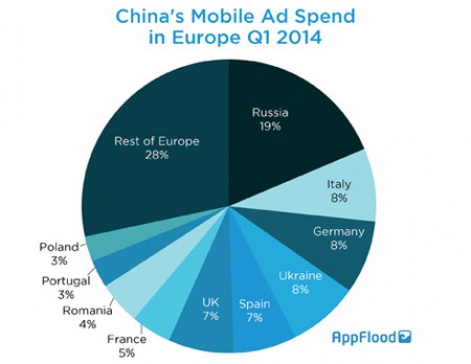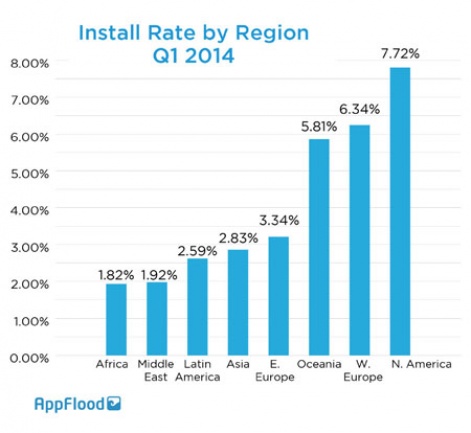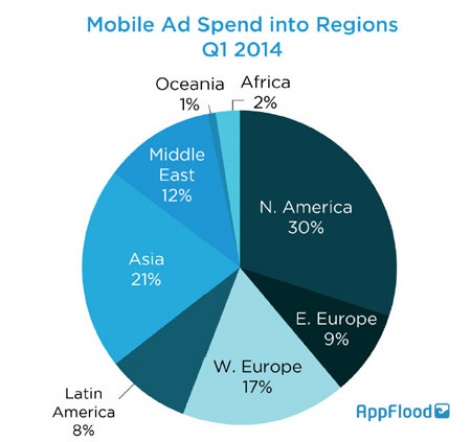Chinese company PapayaMobile has released its quarterly report based on trends from its Android mobile advertising platform AppFlood.
As might be expected, traffic on the network continues to rise.
In terms of March 2014, it was up 25 percent month-on-month, while Q1 2014 was 46 percent higher than Q4 2013.
The money spent on mobile advertising is growing faster, though. It's up 62 percent quarter-on-quarter.
Looking at the breakdown of how mobile advertising is displayed, for AppFlood it's all about interstitial ads - which make up 70 percent of inventory - although Rich Media (video ads) is rising fast; up 34 percent month-on-month in 2014 so far.

Regional detail
Given PapayaMobile is based in China, it's no surprise that it's largest region in terms of traffic is Asia, although the Middle East is similarly-sized, despite having a much smaller population.
Looking at Europe, the largest market for Chinese advertisers in Europe is Russia at 19 percent, while key EU5 terriorities such as Germany, Italy, Spain and the UK are at 8 percent and 7 percent respectively.

When you drill down into how this traffic converts into app and game installs, it's a different story, however.
North America, Europe, and Australia and New Zealand offer significantly higher install rates, particularly than the Middle East.

And it's this sort of behaviour that means North America remain the key region in terms mobile advertising spend on AppFlood.

You can read the full AppFlood Global Mobile Android Advertising Insights Q1 2014 report here.

















